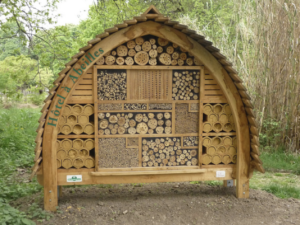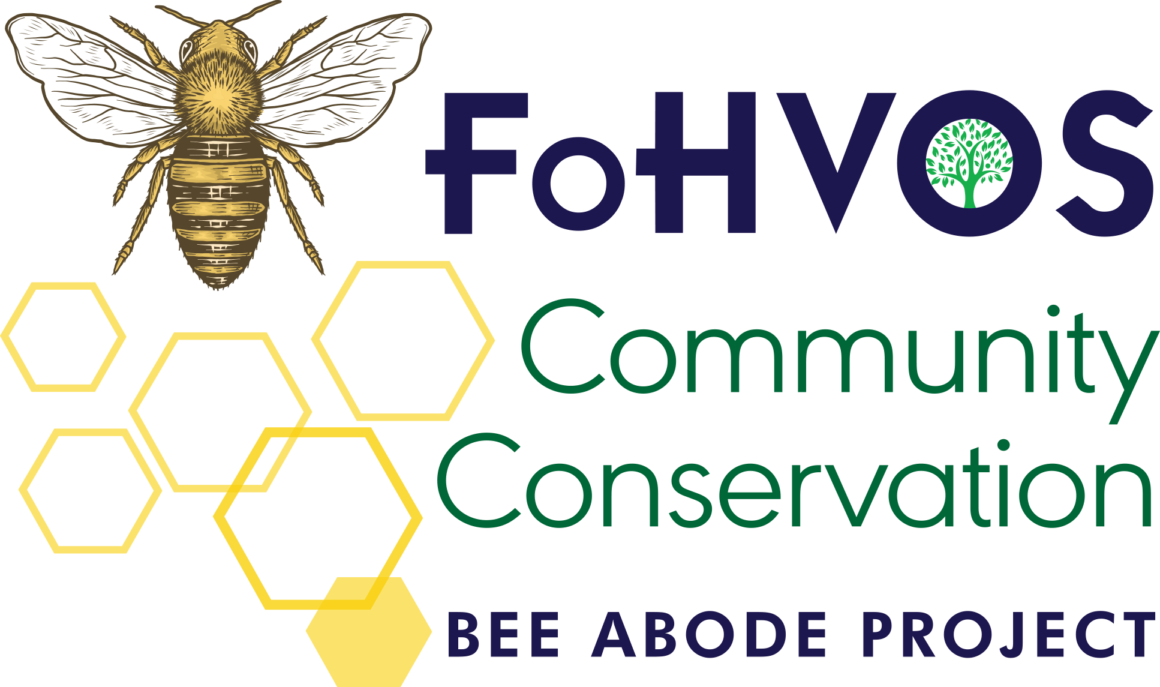Like many expressions that evolve over time, “the birds and the bees” has new significance. It’s still a conversation about reproduction, but the associated awkward talk is now about actual “birds and bees,” and understanding why their populations are declining.
Last year birds took center stage as we examined the declining population of the American Kestrel, a threatened falcon, and the need to provide new habitat for our feathered friends. In response, various Hopewell Valley participants stepped up community conservation efforts and built 50 nesting boxes. Many boxes were used for a successful season, and volunteers will continue monitoring the boxes this season. We anticipate further progress as kestrels return for their late spring breeding season.
This year, we set our sights on creating new habitat for rapidly declining bee populations. According to the Yale School of Forestry and Environmental Studies, “One of every three bites of food eaten worldwide depends on pollinators, especially bees, for a successful harvest.” But for decades, global bees’ population have declined due to biodiversity losses and habitat destruction. Further, pesticide use is a particular threat for honeybees and wild pollinators. If the die-off continues, it will have huge economic and public health consequences for people.
In response to this crisis, FoHVOS is happy to announce a Community Conservation Bee Abode Initiative and partners have already stepped up to help! Local schools, churches, scout troops, and businesses are all joining together to help and you can too!
Bees can be social or solitary and new habitats will accommodate those needs. Bee abodes will range from small individual homes to more luxurious bee hotels. The variation in design makes this a perfect project for every age and ability. All abodes will be constructed from upcycled or repurposed materials and invasive species, like phragmites, harvested from FoHVOS preserves.
We anticipate creating homes and nesting locations for various bee species. FoHVOS has plenty of properties throughout Hopewell Valley with locations away from trails where bee sanctuaries can reside relatively undisturbed. There will also be opportunities for appropriate local residential installations. All participating partners from the previous kestrel project have already committed and are building momentum around this Community Conservation Bee Abode initiative. We are optimistic their positive energy will translate into fantastic results.
Wildflowers Inn collected and donated used straws from their customers in Pennington. Straws make up about 4 percent of plastic trash by piece. They wind up landfills or worse, our oceans. Aside from pollution, straws are dangerous to turtles, seabirds and fish. Donated straws were kept out of the trash and repurposed into bee abodes at a February 15thFamily Workshop held at Timberlane Middle School.
In addition, March is the month the rest of the Hopewell Valley will build their homes and hotels. Students will harvest Invasive Fragmites reeds from local Hopewell Valley preserves. The reeds are hollow and will form the bee abode core.
The Hopewell Valley Regional School District began a pilot last year. According to a district representative, “Seventh graders on one team created bee abodes to take home. STEM facilitators started a pollinator project as a vertical articulation between the elementary schools, middle school and high school.” This year all schools will participate and the associated curriculum will include an engineering design project, worldwide pollinator decline research, and global ecology awareness. All 2nd graders, 7th graders, and AP Biology students will be exposed at an age appropriate level. We are also talking with Green Teams, and environmental classes and clubs.
The Pennington School is also stepping up efforts. Dr. Margo Andrews reports lots of interest and excitement. She’s hosting a joint session on campus with FoHVOS stewards, “That way, our middle schoolers, Applied Science students, and Ecology students could all participate without coordinating different times/days for each group.”
Our littlest learners can also ensure our bees have good homes. Nicole Langdo, FoHVOS Board Trustee and Painted Oak Nature School founder, will show them how.
While Hopewell and Pennington School workshops are privately held for students, Bee Abode building clinics open to the public will take place on weekends during the month of March. Register at fohvos.org. Public Sessions will be held in Hopewell on
Sunday March 8 at 1pm Calvalry Baptist Church
Sunday March 15 at 1pm Calvalry Baptist Church
Sunday March 22 at 1pm Calvalry Baptist Church
And in Pennington on Saturday March 28th at 11am the Cambridge School
There will be plenty of opportunities for anyone that wants to help. As part of larger volunteering initiative, Bloomberg staff will help assemble and install larger hotels. Volunteers are still needed for all phases of the project. We will also need additional help harvesting materials, and will need adult volunteers to drill holes in wood we will supply from fallen trees. Finally, we need private property owners who are willing to host bee abodes. Large bee hotels require large spaces with minimal human activity. Scout will be assembling mini-bee abodes into fancy bee hotels.
This project is a major expansion and it’s been pretty remarkable to see groups, families, and individuals of all ages collaborate on a Community Conservation initiative bringing hope for the birds and the bees.

Lisa Wolff is the executive director of Friends of Hopewell Valley Open Space. She can be reached by email at lwolff@fohvos.org.
An excerpt of this article appears in March’s Hopewell Valley Neighbors magazine.

